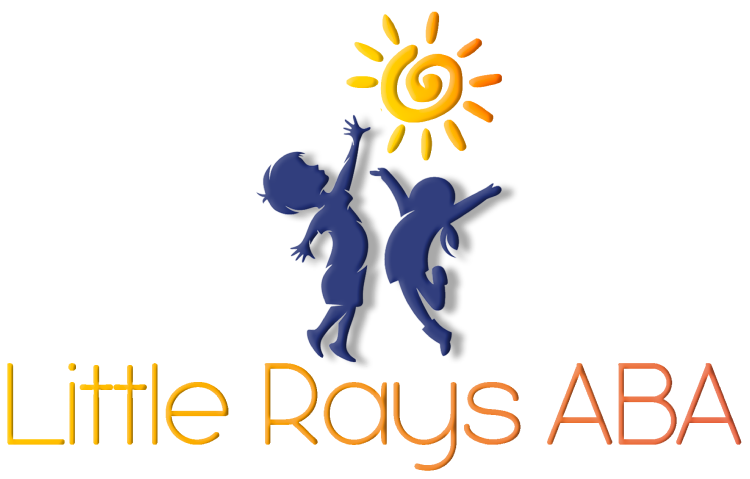
The Crucial ABA Therapist Job Responsibilities Explained
Identifying ABA Therapists
Selecting a qualified ABA therapist is crucial for the success of behavioral interventions. This section covers what to look for regarding qualifications, certifications, and experience in different settings.
Qualifications and Certifications
ABA therapists typically hold at least a master's degree in fields such as education, applied behavior analysis, or psychology. They must meet specific coursework requirements and pass the BCBA exam to earn the Board Certified Behavior Analyst (BCBA) certification.
Essential certifications and their requirements:
| Certification | Requirements | Cost |
|---|---|---|
| BCBA | Master’s or Doctorate, specific coursework, and passing BCBA exam | $245 |
| Licensing | Varies by state, licensure requirements, and renewal fees | Varies |
In addition to passing the BCBA exam, therapists must fulfill experience requirements as part of their training. Licensing and certification policies vary by state, with 37 states requiring these credentials for ABA therapists to bill insurance. Renewal of licenses often includes continuing education.
For detailed information on certifications, visit ABA therapist certification.
Setting-specific Experience
Experience in different settings is vital for ABA therapists to tailor interventions effectively. ABA therapists may work in a variety of environments such as clinics, schools, patients' homes, hospitals, government agencies, and nonprofits.
Experience considerations:
- Schools and Educational Settings: Therapists with a background in educational environments are adept at creating Behavior Intervention Plans (BIPs) and Individualized Treatment Plans that meet educational standards.
- Home-based Therapy: ABA therapists with in-home experience are skilled in engaging family involvement and providing support in a familiar environment.
- Clinical Settings: Therapists working in clinics can access specialized resources and collaborate with a larger team of healthcare professionals.
To learn more about experience requirements, visit ABA therapist experience. For related skills necessary for effective practice, check out ABA therapist skills.
By considering both qualifications and setting-specific experience, families and professionals can ensure they select competent and effective ABA therapists.
Job Responsibilities
ABA therapists play a crucial role in supporting individuals with autism and related conditions through a variety of job responsibilities, centered around developing and executing Behavior Intervention Plans, Individualized Treatment Plans, and working within educational settings.
Behavior Intervention Plans (BIPs)
Behavior Intervention Plans (BIPs) are vital tools for ABA therapists. They provide a structured approach to addressing challenging behaviors and promoting positive behavior change. BIPs take into account environmental factors and the responses of those interacting with the individual (source).
Key Components of BIPs:
- Behavior Identification: Pinpoint specific problem behaviors.
- Function Analysis: Understand the causes of these behaviors.
- Strategy Implementation: Apply consequences to adjust behaviors.
A well-designed BIP aims to teach skills that increase the individual's independence, promote the least restrictive environment, and improve their overall quality of life. Safety is a priority, and consequence strategies should aim to de-escalate challenging behaviors without immediate reinforcement.
Individualized Treatment Plans
Individualized Treatment Plans (ITPs) are tailored to meet the unique needs of each individual. ABA therapists create these plans based on comprehensive assessments, ensuring that interventions are effective and personalized.
Components of ITPs:
- Assessment: Conduct detailed evaluations to understand the individual's strengths and areas of need.
- Goal Setting: Establish specific, measurable, and attainable goals.
- Intervention Strategies: Develop targeted interventions to address identified areas.
Evidence-based practice (EBP) is integrated into the treatment plan, ensuring that decisions are guided by ethical principles, clinical expertise, client values, and ongoing progress monitoring for effective care.
Role in Schools and Educational Settings
ABA therapists often work in schools and educational settings, collaborating with educators to support students with autism and other related conditions.
Responsibilities in Schools:
- Collaboration: Work with teachers and staff to implement strategies within the classroom.
- Training: Provide training to school personnel on ABA techniques and interventions.
- Monitoring: Regularly assess the progress of students and adjust strategies as necessary.
ABA therapists ensure that students receive the support they need to succeed in an educational environment, promoting positive behavior and learning outcomes.
| Role | Responsibilities |
|---|---|
| School Collaboration | Implement classroom strategies, train staff, monitor student progress |
| Behavior Intervention Plans | Identify behaviors, analyze causes, apply consequence strategies |
| Individualized Treatment Plans | Conduct assessments, set goals, develop interventions |
For more information on the necessary qualifications and certifications for ABA therapists, visit our page on ABA therapist qualifications.
Strategies and Techniques
ABA therapists utilize a variety of strategies and techniques to address the individualized needs of their clients. These methods are foundational to their responsibilities and critical for achieving effective outcomes.
Behavior Analysis Methods
Behavior analysis methods are essential tools for ABA therapists. These methods often include:
- Functional Behavior Assessments (FBA): Mandatory under the
Individuals with Disabilities Education Act (IDEA), FBAs help identify the cause of behaviors and inform the development of Behavior Intervention Plans (BIPs).
- Positive and Negative Reinforcement: Reinforcement is used to increase desirable behaviors. Positive reinforcement involves rewarding the behavior, while negative reinforcement entails the removal of an adverse stimulus.
- Extinction: A technique used to reduce or eliminate challenging behaviors by stopping reinforcement for the behavior, which leads to its gradual disappearance over time.
These methods enable the therapist to systematically address behavioral issues and reinforce positive behaviors.
Intervention Techniques
Intervention techniques are tailored to the specific needs of individuals with autism and other developmental disabilities. Key techniques include:
- Prompting and Fading: Introducing prompts to encourage the desired behavior and gradually reducing them as the behavior is learned.
- Behavior Chaining: Breaking down a complex behavior into smaller, teachable steps.
- Modeling: Demonstrating the desired behavior for the learner to imitate.
- Behavior Contracts: Establishing a written agreement that outlines expected behaviors and associated rewards or consequences.\
Communication Skills
Effective communication skills are vital for ABA therapists. This includes:
- Clear Instructions: Providing concise and understandable directions to clients.
- Active Listening: Paying close attention to verbal and non-verbal cues.
- Engaging with Families: Involving family members in the therapy process to reinforce behaviors at home.
- Collaboration with Other Professionals: Working alongside educators and healthcare providers to ensure a holistic approach to the client’s needs.
ABA therapists must excel in these areas to create a collaborative and supportive environment for their clients.
Efficient use of these strategies and techniques by ABA therapists plays a crucial role in fulfilling their job responsibilities. By mastering these methods, therapists can make significant progress in addressing the behavioral needs of their clients.
Collaboration and Compliance
One of the critical aspects of an ABA therapist's role is ensuring effective collaboration and compliance with families, ethical standards, and legal requirements.
Family Involvement
A fundamental component of aba therapist job responsibilities is involving the family in the therapy process. Active family participation enhances the effectiveness of treatment and ensures consistency across different environments, reinforcing positive behaviors and managing challenges effectively.
Therapists should provide training and support to parents and guardians, helping them understand and implement Behavior Intervention Plans (BIPs) at home. By working closely with families, therapists enable them to:
- Consistently reinforce desired behaviors
- Follow the intervention plans accurately
- Develop skills to manage challenging behaviors
Ethical Practices
Adhering to ethical practices is paramount for ABA therapists. Ethical guidelines ensure that therapists provide high-quality care and maintain professional integrity. Key ethical responsibilities include:
- Confidentiality: Safeguarding the privacy and personal information of clients and their families.
- Informed Consent: Ensuring that clients and their families understand the treatment plan, potential benefits, and risks involved.
- Non-discriminatory Practices: Treating all clients with respect, irrespective of their background, and avoiding any form of bias.
Ethical practices help build trust between therapists, clients, and families, fostering a supportive and effective therapeutic environment.
Legal Requirements
ABA therapists must also comply with various legal standards and regulations to practice effectively and legally. Laws governing the practice of ABA therapy vary by region, but some common legal requirements include:
- Licensing and Certification: Therapists need to obtain the appropriate credentials and maintain them through continued education and renewal processes.
- Documentation: Keeping thorough and accurate records of treatment plans, progress notes, and interventions to ensure accountability and transparency.
- Reporting Obligations: Adhering to mandatory reporting laws regarding any instances of abuse or neglect to protect the welfare of clients.
Ensuring compliance with these legal requirements not only protects therapists and their clients but also reinforces the credibility and professionalism of the ABA therapy field.
ABA therapists play a crucial role in shaping positive behaviors and improving the quality of life for individuals with Autism Spectrum Disorder (ASD) and related conditions. By focusing on family involvement, adhering to ethical practices, and meeting legal requirements, therapists create a supportive and effective therapeutic environment essential for successful outcomes.
Ongoing Support and Monitoring
Progress Monitoring
An essential responsibility of an ABA therapist is ongoing progress monitoring. This involves continuously tracking the client's development and behavior changes over time, ensuring that the Behavior Intervention Plans (BIPs) and Individualized Treatment Plans are effective.
Monitoring progress includes:
- Regular data collection on target behaviors.
- Frequent analysis of collected data to identify trends and patterns.
- Adjustments to interventions as needed, based on data findings.
Revision and Adaptation
Revising and adapting treatment plans is another key role of an ABA therapist. As client needs and behaviors evolve, their plans should be updated accordingly to ensure ongoing effectiveness.
Key aspects of revision and adaptation include:
- Reviewing progress data and feedback from family members and teachers.
- Modifying goals and strategies based on observed improvements or challenges.
- Ensuring that interventions remain the least intrusive yet effective.
This proactive approach helps maintain a high level of individualized care and maximizes the therapeutic outcomes.
Continuing Education
To provide the best care, ABA therapists must engage in continuing education. This ensures they remain updated with the latest research, techniques, and ethical standards in the field of Applied Behavior Analysis (ABA).
Continuing education might involve:
- Attending workshops, seminars, and conferences.
- Completing advanced certification courses.
- Participating in professional development programs.
Maintaining up-to-date knowledge allows therapists to integrate evidence-based practices and deliver informed and effective treatment.
| Task | Frequency |
|---|---|
| Data Collection | Daily/Weekly |
| Progress Review | Monthly |
| Plan Revision | As Needed |
| Continuing Education | Annually |
By monitoring progress, making timely revisions, and continuously educating themselves, ABA therapists can provide sustained support and ensure that their clients achieve meaningful behavioral improvements.
Personal Qualities
For ABA therapists, possessing certain qualities is essential for success in their roles. These qualities not only enhance their effectiveness in dealing with individuals with autism spectrum disorder (ASD) but also contribute significantly to the overall progress of their clients.
Patience and Empathy
ABA therapists often work one-on-one with children who have developmental or intellectual disabilities. This requires immense patience and empathy. They must understand the challenges faced by their clients and remain calm during sessions. Empathy helps in building trust and a strong therapeutic relationship.
Adaptability and Creativity
Adaptability and creativity are crucial when dealing with diverse needs. Each individual with ASD responds differently to treatment plans. Therapists must be creative in their approach, continuously adapting strategies to find what works best for each client. Tailored treatment plans are essential for progress.
Problem-solving Skills
Effective problem-solving skills are indispensable. ABA therapists must analyze behavior patterns and develop intervention plans tailored to the unique needs of their clients. Their responsibilities include implementing behavior intervention plans and providing individualized treatment.
By embodying these personal qualities, ABA therapists can significantly enhance their capability to support individuals with autism in achieving their full potential.
SOURCES:
https://www.abatherapistjobs.com/blog/aba-therapist-job-description
https://howtoaba.com/writing-bip/
https://www.counselingschools.com/careers/applied-behavior-analysis
https://gsep.pepperdine.edu/blog/posts/aba-techniques-strategies-for-behavior-analysts.htm
https://masteraba.com/behavior-plan/
Related Posts





